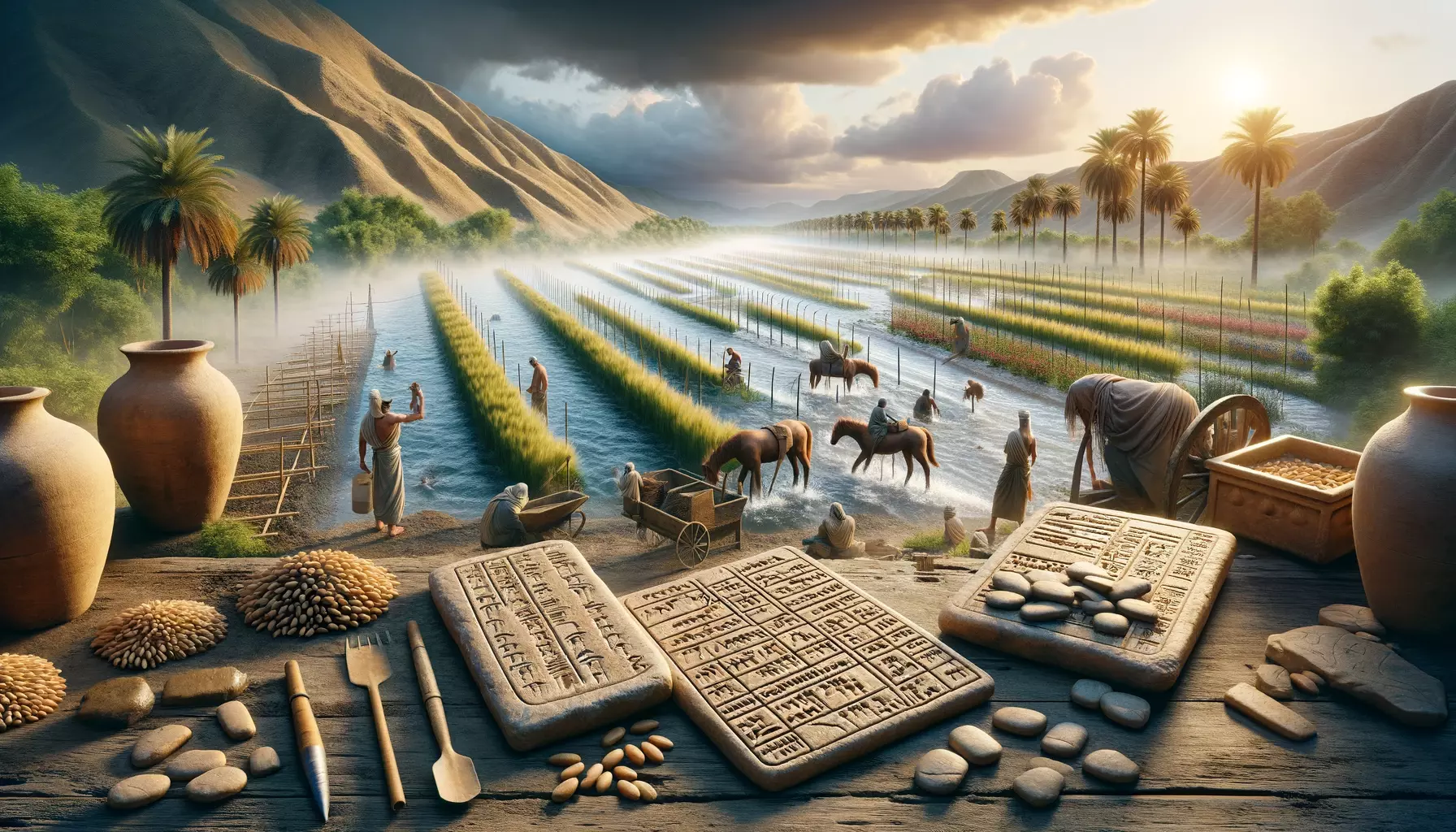A Student’s Passion for Agricultural History
As a student of agricultural engineering, I was captivated by a course titled ‘History of Agriculture.’ This wasn’t just due to my love for farming; it was also fueled by my fascination with ancient history. Delving into the origins of agriculture in civilizations like Mesopotamia and Egypt was more than academic for me; it was a journey into the very beginnings of human settlement and innovation.
The Dawn of Agriculture in Mesopotamia and Egypt
Mesopotamia, one of humanity’s earliest cradles, witnessed the birth of agriculture around 10,000 years ago. This was a land where the first written records, primarily on agricultural production, emerged with the invention of cuneiform writing about 5,500 years ago. Similarly, Egypt, flourishing under Pharaoh Menes’ unification of Upper and Lower Egypt around 5,000 years ago, developed a robust agricultural system. Their hieroglyphic writing and advanced farming techniques were key to sustaining their populous civilization.
Relevance to Modern California
Understanding these ancient civilizations is not just a historical exercise; it offers valuable insights for contemporary regions like California. The successes and failures of our ancestors provide lessons that can help us avoid repeating history’s mistakes, particularly in agriculture.
Fertile Lands and Ancient Irrigation Techniques
Both Mesopotamia and Ancient Egypt thrived on fertile lands along their great rivers – the Euphrates, Tigris, and Nile. They developed irrigation systems, often powered by the labor of enslaved people using tools like the shaduf, to transport water to their fields. This careful water management was crucial for their survival, especially given their limited rainfall.
Contemporary Challenges in California
Today, California faces its own set of agricultural challenges. Groundwater depletion for cash crops, often at the expense of long-term sustainability, poses a threat to the state’s food and nutrition security. The irony is stark in the richest agricultural region of the U.S., where farmworkers suffer from high rates of food insecurity, not due to a shortage of food but a lack of equitable distribution.

A Call to Action: Learning from the Past
California must strike a balance between productive, healthy food systems and long-term agricultural sustainability. The downfall of great civilizations often came from neglecting the natural resilience needed for agricultural sustainability. We now have the knowledge to avoid repeating these historical mistakes.
Water Distribution: A Crucial Decision
Decisions on water allocation in California are critical. The choice lies between supporting corporations that potentially exploit resources for short-term gains and backing local farmers who contribute to sustainable, circular economies. Approximately one million acres of cropland need repurposing for water sustainability. The manner in which this transformation is approached will be decisive for California’s future.
Shaping a Sustainable Agricultural Future
If California transitions its conventional croplands into more sustainable practices, it could significantly benefit the health, economy, and environment of its population, supporting farmers of all sizes. Missteps, however, could jeopardize the future of the state’s Central Valley.
The Path Forward
A sustainable future hinges on judicious water distribution and land use. California’s choices today will shape its agricultural legacy, emphasizing the need for choices that foster a healthy environment and food system. The wisdom from ancient agriculture can guide these decisions, ensuring California remains a bastion of agricultural innovation and sustainability.
